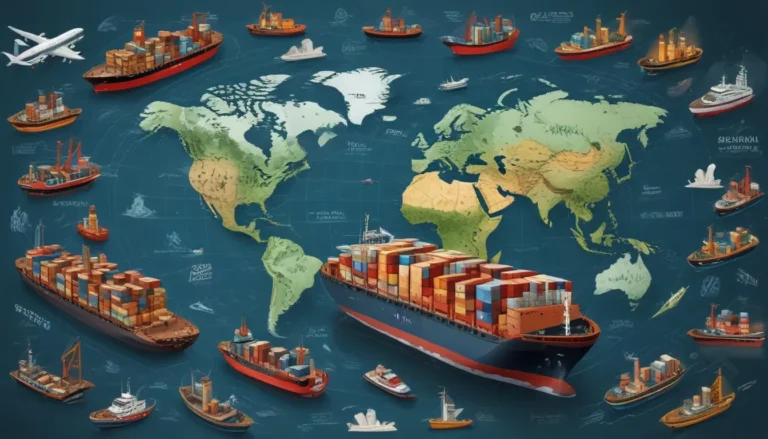A Note About Images: The images used in our articles are for illustration purposes only and may not exactly match the content. They are meant to engage readers, but the text should be relied upon for accurate information.
Welcome to a journey through the rich tapestry of cultural assimilation in the vibrant city of Toronto! Cultural assimilation is a captivating phenomenon that has been shaping societies worldwide for centuries. From the blending of diverse cultures to the preservation of unique traditions, the process of assimilation has had a profound impact on all aspects of human life. In this article, we will delve into key facts about cultural assimilation, exploring the nuances of this complex and intriguing concept.
Understanding Cultural Assimilation
Cultural assimilation refers to the process by which individuals or groups adopt the cultural traits, behaviors, and customs of another culture. It occurs when people from different cultural backgrounds come into contact with each other, leading to the blending of beliefs, traditions, language, and even food. This process can be both voluntary, where individuals choose to embrace elements of a different culture, or involuntary, where social, political, or economic pressures force assimilation.
Forced assimilation has been a common practice throughout history, with dominant cultures imposing their beliefs and customs upon minority groups. While cultural assimilation can promote social integration and acceptance, it can also result in the loss of cultural identity and the suppression of unique traditions. Language plays a crucial role in cultural assimilation, as individuals learning the dominant language of a society enhances their ability to communicate, integrate, and participate fully in that culture.
The Impact of Cultural Assimilation
Cultural assimilation has been a topic of debate and controversy, with some arguing that it promotes social cohesion and unity, while others believe it perpetuates inequality and marginalization of minority groups. Educational institutions play a significant role in cultural assimilation by promoting the dominant culture’s values, language, and history. However, cultural assimilation is not limited to immigrants, as it can occur within a single society between different regions, social classes, or ethnic groups.
When cultures interact and exchange ideas, cultural assimilation can lead to a renewed interest in preserving and celebrating one’s own cultural heritage. The increasing interconnectedness of the world through globalization has accelerated the process of cultural assimilation, as people are exposed to different cultures through travel, media, and the internet. Studied by sociologists and anthropologists, cultural assimilation is a complex and ongoing process that influences society’s dynamics and shape.
Embracing Cultural Diversity
Cultural assimilation can lead to the formation of multicultural societies, where diverse communities celebrate and embrace different cultural traditions. However, it can also erode indigenous cultures when dominant cultures overshadow or suppress unique languages, traditions, and knowledge systems. It’s essential to acknowledge the challenges and benefits of cultural assimilation, understanding that while it promotes cultural exchange and understanding, it can also result in the loss of cultural diversity and the marginalization of certain groups.
As we continue to navigate an increasingly interconnected world, embracing and celebrating cultural diversity becomes more important than ever. Toronto, a city renowned for its multiculturalism, serves as a prime example of how diverse cultures can coexist and thrive. Cultural diversity enriches our lives, bringing new perspectives, traditions, and experiences to the table. Understanding and embracing the differences that make us unique are crucial steps towards building inclusive and harmonious societies.
Conclusion
In conclusion, cultural assimilation is a fascinating and dynamic process that shapes societies and influences individuals’ identities. Understanding the nuances of cultural assimilation allows us to appreciate the diversity of human experiences and foster a sense of unity in our globalized world. By celebrating cultural diversity and preserving unique traditions, we can create a more inclusive and harmonious society where all voices are heard and valued.
Thank you for joining us on this exploration of cultural assimilation in Toronto and beyond. Let’s continue to learn, grow, and celebrate the rich tapestry of cultures that make our world truly extraordinary. Remember, diversity is our strength, and our differences are what make us unique. Let’s embrace cultural assimilation with open hearts and open minds, welcoming the beauty of diversity into our lives.
FAQs
Q: What is cultural assimilation?
A: Cultural assimilation refers to the process of individuals or groups adopting the customs, beliefs, and practices of a different culture.
Q: Is cultural assimilation always voluntary?
A: No, cultural assimilation can occur both voluntarily and forced, depending on individual or societal pressures.
Q: What are some examples of cultural assimilation?
A: Examples include adopting a new language, changing religious beliefs, and embracing cultural customs.
Q: What are the benefits of cultural assimilation?
A: Cultural assimilation can lead to increased understanding, cultural exchange, and diverse societies.
Q: How does cultural assimilation impact language?
A: Cultural assimilation can lead to language adoption or blending, resulting in new dialects or creole languages.
Explore the wonders of cultural assimilation and celebrate the richness of diversity in our world. Together, we can create a more inclusive and harmonious society for all.






